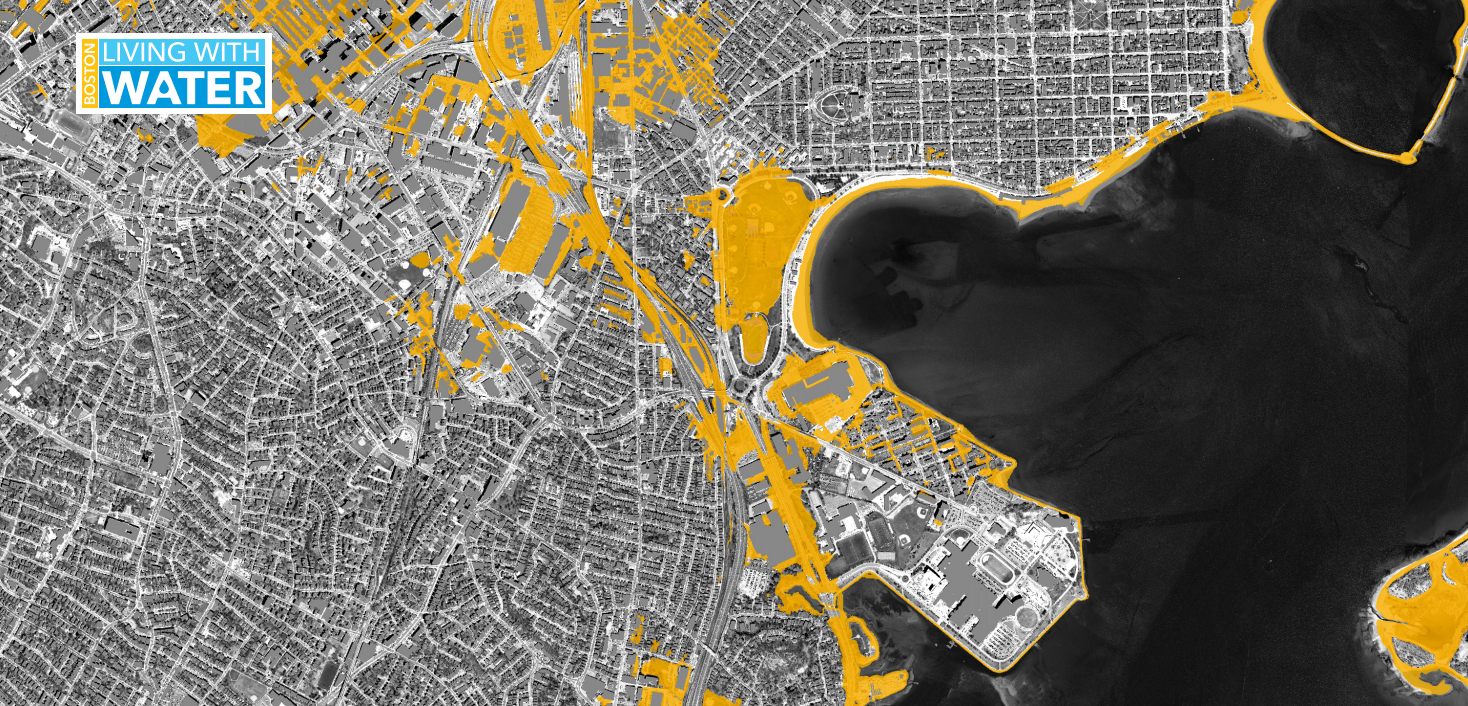Can you imagine how Boston will look 100 years from now—when the waters of Boston Harbor are predicted to rise as much as four to six feet?
Recently, architects, planners, and designers were challenged to help Boston answer that question. The Boston Living with Water competition solicited innovative ideas for three sites around the city. Design ideas ranged from “living levees” that could soak up water during storms, to elevated walkways, to entirely new landforms and systems of canals. Come June, one of the design teams will be awarded a $20,000 grand prize.
Creative solutions and competitions like these can help keep our long-term challenge in mind. Some cities begin to organize around climate-change resiliency only in the wake of natural disasters—like New York after Hurricane Sandy or New Orleans following Katrina.
Here in Boston we cannot afford to wait. If we want to protect the city’s assets along the waterfront (which some have valued at close to $500 billion), we must start now—ahead of the next storm and well before flooding becomes a monthly or even daily occurrence. Indeed, the level of the Boston Harbor is already nearly one foot higher than it was 100 years ago, thanks to climate change and the subsidence of filled land.
That is why several of us who sit on the Boston Green Ribbon Commission, a collaboration among public- and private-sector entities on climate change, have been actively engaged in resiliency planning. Our analysis over the last year has led us to six priorities for Boston to enhance its resilience to rising seas:
Scenario planning: Agree on the range of scenarios that should be used for resiliency planning—using the best-available science. Ongoing monitoring to assess the changes underway every five to ten years is critical, too.
Prioritization: Integrate all vulnerability assessments to develop a common set of priorities. There are many risk assessments now underway by state and city agencies (e.g., MassDOT, Massport, City of Cambridge, City of Boston Water and Sewer, FEMA). We must create a common database to identify top priorities for infrastructure investment.
Solutions Toolkit: Develop a new arsenal of design solutions for what we call “resilience districts.” These feasible design solutions—on the neighborhood, watershed, harbor, or regional scale—will help various neighborhoods and the Boston waterfront as a whole become more resilient.
Design Standards: Determine design and regulatory standards that should be put in place to govern future infrastructure expenses and private sector development. We should integrate these standards with existing planning to ensure all new infrastructure investments consider and integrate sea-level rise risks.
Governance: Determine a governing structure that can work effectively across various political jurisdictions. This new governance structure should provide a coordinated plan of action for defending the city and metro region over the long term. Mayor Walsh has already taken the first step by deciding to host an upcoming regional mayoral summit on this subject.
Financing: Develop financing mechanisms to address infrastructure needs and incentivize the private sector. Financing sources such as insurance premium reductions that reward best practices or green bonding to create capital for resilience projects will help property owners prepare and will reduce the burden on taxpayers if a major storm hits.
While these six priorities are an important start, there is a long road ahead in addressing rising sea levels. However, I take hope from the Netherlands, a country that has been battling the sea for eight centuries. There, seven out of sixteen million people live successfully below the level of the sea, and some sixty to seventy percent of the nation’s GNP is produced below sea level. Rather than retreating or relocating (which may be appropriate in other, less urbanized coastal areas along the coast), the Dutch have found a way to combine a variety of structural and non-structural measures to protect their nation. If they can do it, so can we!




